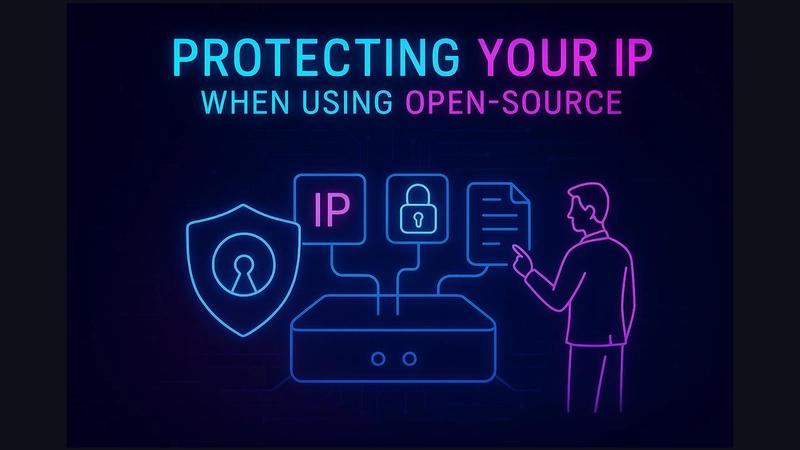Protecting Your IP When Using Open-Source: Policy, Practice, and Automation
Using open-source libraries can accelerate product delivery—but if left unchecked, they can introduce legal risk and threaten your company’s intellectual property. Learn how to identify and mitigate restrictive licenses, build proper attribution workflows, and integrate tools like Black Duck SCA to stay compliant and protected.

Brandon Wilburn
3 min read•April 07, 2025

Protecting Your IP When Using Open-Source
Open-source software (OSS) is foundational to modern product development. From frameworks to database engines, its ubiquity allows engineering teams to move faster and focus on differentiated value. But with great acceleration comes great responsibility. Left unmanaged, OSS introduces potential landmines in the form of restrictive licenses—particularly when you intend to commercialize or protect the IP built on top of it.
This article outlines how technology leaders can protect proprietary IP by building robust open-source governance practices. We'll cover:
Subscribe to TechieBrandon's blog to read the rest of "Protecting Your IP When Using Open-Source: Policy, Practice, and Automation" and get access to exclusive tech content.
What you'll get:
Affiliate Disclosure

About Brandon Wilburn
As a technology and business thought leader, Brandon Wilburn is currently the Chief Architect at Spirent Communications leading the Lifecycle Service Assurance business unit. He provides vision and drives the company's strategic initiates through customer and vendor engagements, value stream product deliveries, multi-national reorganization, cross-vertical engineering efficiencies, business development, and Innovation Lab creation.
Brandon works with CEOs, CTOs, GMs, R&D VPs, and other leaders to achieve successful business outcomes for multinational organizations in highly technical and challenging domains. He provides direct counsel to executives on markets, strategy, acquisitions, and execution.
With an effortless communication style that transcends engineering, technology, and marketing, Brandon is adept at engaging marquee customers, quickly building relationships, creating strategic alignment, and delivering customer value.
He has generated new multi-national R&D Innovation Lab organization from inception to scaled delivery, ultimately 70 resources strong with a 5mil annual budget, leveraging FTEs and consulting talent from United States, Canada, United Kingdom, Poland, Lithuania, Romania, Ukraine, Russia, and India all delivering new products together successfully. He directed and fostered the latest in best practices in organization structure, methodology, and engineering for products and platforms.
Brandon believes strongly in an organization's culture, organizing internal and external events such as Hackathons and Demo Days to support and propagate a positive the engineering community.